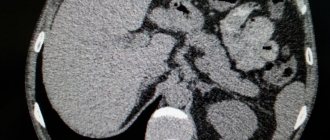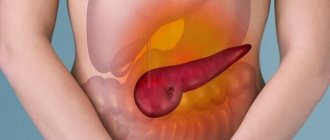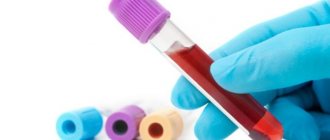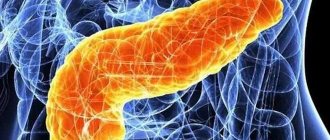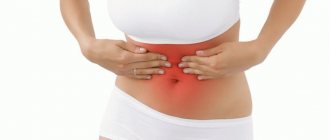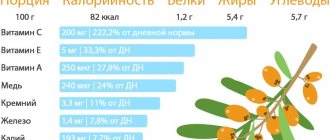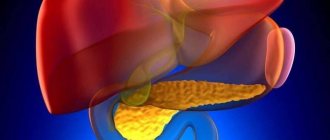Pancreatitis is a disease in which the pancreas is gradually destroyed. It happens like this: due to inflammation, its functions are disrupted, digestive enzymes cannot enter the duodenum, and remain inside the gland. Its self-digestion begins. In addition, the enzymes and toxins produced can enter the bloodstream and damage other internal organs - the liver, kidneys, and heart.
Statistically, pancreatitis develops more often in men than in women. A person's gender has no effect on the development and course of the disease. But nevertheless, cases of alcohol abuse are more common among men, and it is one of the causes of serious digestive problems.
Causes of pancreatitis in men
If you do not pay attention to your health and well-being, health problems will sooner or later make themselves felt in acute or chronic form.
Any disease is much easier to prevent than to treat, so it will be useful to know what factors influence the development of pancreatitis.
Here are the most common causes of pancreatic inflammation in men:
- Alcohol abuse. This also includes frequent consumption of low-alcohol drinks, such as beer. Under the influence of alcohol, digestive enzymes are produced more actively, but a spasm may occur, and pancreatic juice will not be able to enter the duodenum. It is because of this phenomenon that attacks of acute pancreatitis often occur.
- Poor nutrition. A person can eat large amounts of fast food, prefer fatty and fried foods, and still feel good. But this does not mean that no hidden pathological processes occur in his body. Regular intense stress on the entire digestive system leads to the fact that all organs suffer - not only the pancreas, but also the stomach, duodenum, and gall bladder.
- Chronic diseases of the gastrointestinal tract - ulcers, gastritis, cholecysitis - provoke the development of pancreatitis.
- Also at risk are men suffering from kidney stones.
- The cause of the disease can be mechanical damage to the pancreas - for example, in a car accident, or any other accident in which a person received a blunt blow to the stomach.
Also, the causes of pancreatitis in men may lie in a hereditary predisposition to this disease. It is necessary to collect anamnesis - whether close relatives suffered from similar problems.
Important! Often the disease is provoked by liver problems and hepatitis of any type. Additional risk factors are a long history of smoking and helminthic infestations. In addition, disruptions in the gastrointestinal tract can be a consequence of self-medication.
For example, a person is tormented by pain, but he does not seek medical help, but prescribes painkillers for himself, and subsequently hides this fact from the doctor. This makes it much more difficult for health workers to make a diagnosis.
Chronic pancreatitis
The form of the disease is progressive, with elements of sclerotic inflammation, lasting more than six months, and is considered chronic pancreatitis. The course of the disease is protracted, and pathology gradually develops. There are three forms of development:
- Mild - when the ducts remain unchanged, there is a slight increase in the organ, a slight change in structure.
- Moderate - the presence of cysts less than 10 mm, unevenness of the gland duct, infiltration (penetration of substances into the organ by one third), uneven edges and contours, thickening of the walls.
- Severe – the presence of cysts more than 10 mm, an unevenly dilated duct, a complete change in the structure and enlargement of the gland.
Processes in chronic pancreatitis
In the pancreas, stagnation of secretion occurs, since the ducts at the outlet are narrowed, trypsin and other enzymes are activated inside the gland. The danger of chronic pancreatitis is that the main tissue - parenchyma - is replaced by connective tissue, which is not capable of reproduction. The result is exocrine (enzyme deficiency) and endocrine (insulin deficiency) insufficiency.
The production of the necessary enzymes in the required quantities decreases. Substances are unable to enter the intestines to digest food due to changes in the ducts.
Human intestine
The production of insulin, necessary for the normalization of metabolism (metabolism), is an important function, but if there are disturbances, the production of the hormone decreases or stops completely. Self-destruction occurs and pancreatic necrosis develops. The tissues and cells of the gland gradually die. Pathological changes create a danger of destructive effects on other parts of the body.
Dangerous complications:
- obstructive jaundice (with an increase in the anterior part of the pancreas);
- duodenal stenosis (narrowing);
- purulent phenomena - the formation of abscesses of the organ and nearby tissues or organs;
- inflammation of the peritoneal walls (peritonitis);
- blood poisoning (sepsis);
- bleeding;
- cholestasis (changes in bile flow);
- thrombosis of the splenic veins;
- diabetes mellitus of all types, including type 1;
- formation of hematomas, cysts up to 10 mm or more;
- tumor growth;
- hypovolemic shock (loss of blood volume circulating in the vessels, and extremely rapid);
- acute renal failure.
Against the general background of the disease, bleeding gums, skin rashes, and brittle nails develop.
Changes in the gastrointestinal tract
Disorders in the gastrointestinal tract increase in the form of intestinal disorders, constipation, diarrhea, flatulence, and bloating. Diarrhea causes dehydration. Progressive inflammation provokes formations on the walls of the esophagus and stomach in the form of numerous erosive plaques.
There is discomfort in the stomach and intestines when eating unwanted foods (salty, fried, fatty foods), and colic occurs. In severe cases - intestinal obstruction.
Disorders in the cardiovascular system
In the cardiac system and blood vessels there are disturbances in the functioning of these organs. There is tachycardia (increased heartbeat), cardiopathy (increase in heart size, heart failure, unstable heart rhythm), and decreased blood pressure.
The vessels narrow, oxygen does not reach the organs in the required quantity, and vascular spasms occur. Blood clotting worsens, unexpected nosebleeds occur.
Results of respiratory system disorders
The respiratory organs are also susceptible to disturbances. Fluid accumulates in the pleura. Possible pulmonary edema.
With colds, there is a high risk of rapid development of pneumonia. The respiratory system suffers, even the larynx.
Development of oncology
A terrible diagnosis - pancreatic cancer - is a consequence of chronic pancreatitis. Resection of part of the affected area or removal entirely is necessary. If the affected organ is removed, for the normal functioning of the body, you will need to take medications for life:
- replacement enzymes;
- lipotropic (amino acids involved in lipid and cholesterol metabolism);
- insulin (to normalize blood sugar levels).
Pancreatitis is considered difficult to treat, but if measures are taken in time, there is a chance to stop the destruction. Compliance with simple rules, constant use of medications and careful attention to the body will reduce the consequences of pancreatitis and save health and life.
Symptoms of pancreatic inflammation
Symptoms of pancreatic disease in men usually develop gradually. The main one is acute pain in the upper abdomen, which occurs mainly after eating fatty, fried, heavy foods. In this case, the pain feels like it radiates to the back.
But pancreatitis of the pancreas in men can develop suddenly, in an acute form. In this case, the person requires immediate medical attention.
Signs of acute pancreatitis in men look like this:
- Unbearable pain in the upper abdomen, which does not just radiate to the back, often has a girdling character.
- Severe repeated vomiting, in which the patient does not feel better.
- A sharp rise or fall in blood pressure.
- Weakness and trembling in the body, cold sweat appears.
Diarrhea also often occurs, with particles of undigested food mixed in the stool. When examining a patient, the doctor may notice a white coating on the tongue.
Important! Chronic pancreatitis manifests itself in periods, mainly after a violation of the diet. It is often combined with other diseases of the gastrointestinal tract - gastritis, gastric or duodenal ulcers, biliary dyskinesia.
Here are the symptoms of chronic pancreatitis in men:
- Frequent hiccups and belching;
- Stool disorders, diarrhea;
- General weakness, surges in blood pressure;
- Nausea, sometimes turning into vomiting;
- Increased gas formation.
Where does it hurt in men during attacks of pancreatitis? In the upper abdomen, the pain intensifies when lying down. But if the patient takes a sitting position and leans forward a little, he will feel better.
The first signs of pancreatitis in men are abdominal pain after drinking alcohol and heavy food. For example, they can be noticed after feasts. If such signs appear, you should reconsider your diet.
What kind of male patients are they?
When making treatment appointments, medical professionals often note differences between patients. Female patients, as a rule, follow the doctor's recommendations more conscientiously. They take a responsible approach to dieting. The patient is required first of all to eliminate the cause that led the body to the disease. Completely stop drinking alcoholic beverages and adjust your diet.
The diet should be complete in protein and vitamin composition. Nicotinic acid and B vitamins are indicated. Protein products (mashed cottage cheese, chicken, veal) predominate in the diet. Spicy and fatty foods are excluded, regardless of culinary tastes and gastronomic preferences.
Some men refer to the inability to carry out regular split meals at the workplace (5-6 times a day). To a greater extent, this is a psychological problem - the disorganization of a patient who is in remission. Replacement administration of enzymes (pancreatin, pancitrate, creon, festal) is also necessary.
Male patients are reluctant to use traditional medicine recipes as aids. Preparing infusions requires some time and skill. Smoking aggravates the development and complicates the treatment of pancreatic diseases. According to statistics, the percentage of men who smoke is higher.
Pancreatic amylase is normal in the blood of men
The doctor’s task when a patient comes to him with complaints of abdominal pain is to establish the correct analysis and prescribe competent treatment . Therefore, your doctor may prescribe tests and other additional studies.
A good marker that will definitely answer whether a patient has problems with the pancreas is pancreatic amylase.
This is a digestive enzyme that, together with pancreatic juice, enters the duodenum and helps the body digest food and absorb carbohydrates.
With developing pancreatitis, amylase remains inside the pancreas and causes destruction of the organ. Part of the enzyme enters the blood. To determine the amount of amylase, a blood test is prescribed.
Carrying out the analysis requires preliminary preparation. The day before donating blood, you should refrain from fatty fried foods and alcohol. The analysis is taken on an empty stomach, the last meal should be 6-8 hours before. For patients who smoke, it would be best to refrain from smoking for several hours before the test.
Important! How much pancreatic amylase should be present in the body - the norm in men’s blood is from 0 to 53 units/l. For adult men and women over 18 years of age, this norm is the same; for children and adolescents, other maximum permissible values are established.
Based on the results of the analysis, the doctor will make an accurate diagnosis much faster. He can also be helped in this by an ultrasound examination of the pancreas, an x-ray, a general blood and urine test.
Pancreatitis syndromes
- Respiratory syndrome, caused by the separation of alveolar fluid. The presence of such a syndrome increases the mortality rate from oxygen deficiency.
- Hemodynamic syndrome is characterized by a decrease in blood pressure. The result is tachycardia and heart failure.
- Liver syndrome often accompanies the disease, since the liver also suffers with pancreatitis. It may manifest itself as yellowing of the skin, tachycardia, increased blood pressure, mental disorders, and increased bleeding.
- Kidney syndrome. Accompanies most people with acute pancreatitis. The main reason is the effect of pancreatic breakdown products and toxins on the kidneys, as well as a decrease in blood pressure.
Treatment methods
Symptoms of pancreatic inflammation in men require immediate medical attention. An attack of acute pancreatitis can be so severe that the patient's life is in danger.
If you have recurring abdominal pain, it is best to consult your primary care physician or gastroenterologist.
Pancreatitis and its treatment should be entrusted only to a trusted specialist; self-medication is strictly not recommended. After all the tests and examinations, the doctor will choose the most suitable treatment method.
If pancreatitis is chronic, treatment will be conservative. The first thing the doctor will recommend is strict adherence to the diet. To quickly relieve the patient of pain, painkillers and antispasmodics are prescribed. These medications significantly improve the patient's quality of life.
The complex treatment regimen also includes enzyme therapy. The doctor will prescribe medications that will help the pancreas function properly and digest food. Such tablets can be taken only on the recommendation of a doctor, and only in the chronic form of the disease. In the event of an acute attack, they can cause harm.
Important! The patient also needs to take a course of vitamins to support his body.
If a patient is hospitalized with an attack of acute pancreatitis, the doctors’ tactics will be as follows:
- First you need to stabilize his condition. For this purpose, therapeutic fasting may be prescribed for 1-2 days.
- A cold weight, such as an ice bag, may be placed on the abdomen in the pancreas area. This is necessary to reduce the activity of enzyme production.
- Also, to reduce the level of enzymes in the blood, droppers are prescribed. If necessary, the patient may be prescribed antibiotics.
If all conservative treatment methods are ineffective and the patient's condition continues to deteriorate, the question arises of removing the pancreas. This operation is called pancreatectomy. This is the main method of surgical treatment of the pancreas.
Sometimes during the operation it becomes necessary to remove the spleen, gallbladder, or the upper part of the stomach. Much depends on the condition of these internal organs. The doctor must assess their ability to function normally.
During surgery, there is a certain risk of complications. In overweight patients suffering from cardiovascular diseases, it is slightly higher than in others.
The recovery process after surgery will take at least 6-8 weeks. The patient must remain in the hospital under medical supervision for at least 7-10 days. During rehabilitation, compliance with a special diet will be of great importance.
Diseases of the pancreas require careful medical supervision, so even if you feel relatively well, you need to be regularly examined by a doctor and have your blood tested for enzymes.
Main signs of pancreatitis
The symptoms of this disease can be expressed or unexpressed: it all depends on the degree of inflammation of the pancreas. At an early stage, the pathology can manifest itself as a feeling of heaviness in the epigastric region, bloating, and constipation may appear.
Expressed
The pronounced manifestation of symptoms of pancreatitis is associated with a failure in the production of enzymes and the inflammatory process in the tissues of the pancreas. These signs include:
- acute pain in the epigastric zone. These are cutting pains, and in the chronic form of the pathology they are dull in nature. In order to reduce the intensity of their manifestation, the patient is forced to take a special position;
- feeling of nausea and vomiting. It is difficult to prevent such attacks; even after cleansing the stomach, the patient does not feel better;
- increased gas formation in the intestines;
- constipation, which changes to diarrhea. In this case, the patient’s stool contains a lot of fat and undigested food particles;
- impaired digestion - manifests itself as a sharp loss of body weight against the background of decreased appetite. This disorder may be caused by insufficient enzymes.
Unexpressed
Unexpressed symptoms of pancreatitis may indicate not only this pathology, but also the presence of inflammation in the man’s body.
Therapeutic maintenance diet
If a patient has suffered acute pancreatitis, in order to quickly restore the body, he needs to follow a special diet . A special diet will help minimize the occurrence of attacks in the chronic form of the disease.
All foods that cause the pancreas to work too intensely are excluded from the diet. This is fatty meat: pork, lamb, duck, goose, all types of lard, sausage products, fatty fish, any food fried in oil, even if it is. Broths cooked with fatty meat are not suitable for consumption. Home canned food, mushrooms, legumes, sorrel, baked goods and confectionery are also excluded. Bananas, grapes, and dates are not suitable for fruits. You should also avoid sour berries.
Important! At the slightest consumption of alcohol, a patient with pancreatitis will feel a sharp deterioration in health, so any alcohol is strictly prohibited. Beverages containing coffee and coffee, cocoa, sweet carbonated water, and strong black tea are not suitable for drinking.
At the same time, the body must receive a sufficient amount of protein. Protein can be obtained from lean meats or poultry, and boiled seafood. For lunch, you should prepare first courses - soups with vegetable broth. Soups should not be fried; vegetables and thin noodles should be added to them. Chicken eggs can be used as steamed omelettes, and there should be only one yolk for 2 whites.
Nutrition for pancreatic disease can be easily made tasty and varied. The following vegetables are allowed: zucchini, potatoes, carrots, pumpkin, a small amount of green peas and cauliflower.
You can prepare milk porridges from buckwheat, oatmeal, and semolina. Milk is diluted with water in a 2:1 ratio. Fermented milk products with low fat content are allowed: cottage cheese, yogurt, kefir.
You can also use butter, both butter and vegetable. The body requires both animal and vegetable fats . The maximum allowable amount of butter is 30 grams per day, vegetable oil is up to 20 grams.
Recommended drinks include weakly brewed black tea, unsweetened dried fruit compotes, fruit juices diluted with water, jelly, and still mineral water.
With strict adherence to the diet, the inflammatory process in the pancreas gradually calms down, the pain syndrome recedes, and the likelihood of developing complications decreases.
Methods for treating pancreatitis
Treatment of pancreatitis is prescribed individually. However, it is important to identify several groups of drugs that can be used to improve the condition. In acute attacks, antispasmodic drugs and painkillers may be prescribed. They may also prescribe medications for allergic symptoms. In acute and chronic forms, antienzyme drugs and additional hepatoprotectors can be prescribed to restore the liver. Sometimes a number of additional medications are needed to bring the disturbed body systems as a result of the disease back to normal. Mandatory condition for following diet No. 5.

